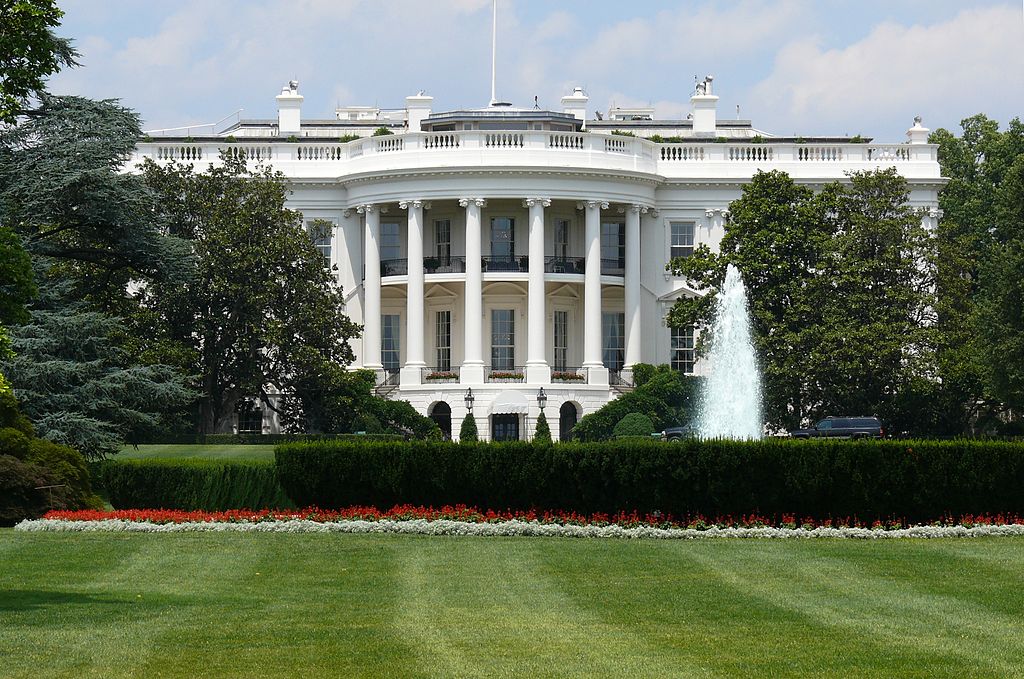Improving the White House Plans for Presidential Inability
After John Hinckley, Jr. shot President Ronald Reagan and three others outside the Washington Hilton Hotel in 1981, confusion reigned. Reagan was rushed to emergency surgery and Vice President George H.W. Bush was difficult to reach aboard Air Force Two. A Soviet nuclear submarine was moving closer to the United States, but senior officials in the Situation Room quibbled over who was in command of the military. Secretary of State Alexander Haig announced to the press that he was “in charge,” even though he was not next in the line of succession.

Published by The Lawfare Institute
in Cooperation With

After John Hinckley, Jr. shot President Ronald Reagan and three others outside the Washington Hilton Hotel in 1981, confusion reigned. Reagan was rushed to emergency surgery and Vice President George H.W. Bush was difficult to reach aboard Air Force Two. A Soviet nuclear submarine was moving closer to the United States, but senior officials in the Situation Room quibbled over who was in command of the military. Secretary of State Alexander Haig announced to the press that he was “in charge,” even though he was not next in the line of succession. Then-White House counsel Fred Fielding recounts that “eyes glazed over” in the Situation Room when he mentioned the 25th Amendment.
The amendment had filled gaping holes in the legal framework for presidential succession and inability when ratified in 1967. But the White House had not created detailed plans for its use by the time Hinckley fired on President Reagan in March 1981.
The chaos following the assassination attempt was a turning point for the 25th Amendment. In the following days, when Reagan was conscious and recovering, the Justice Department’s Office of Legal Counsel completed a memo on the 25th Amendment. By the middle of the next year, the White House counsel’s office had compiled a nearly 200-page binder with plans for invoking the amendment. The document was updated by following administrations until at least the most recent Bush administration. (One version from the Clinton administration is available on Fordham Law’s 25th Amendment Archive.)
The contingency plans binder includes draft letters for invoking the 25th Amendment. Copies of the letters are kept at the White House, aboard Air Force One and Two and in the nuclear football.
The question of when to use those letters is addressed by another document in the binder: It states that the 25th Amendment’s drafters “envision[ed] that … inability to govern might stem from either physical or mental disabilities of the President.” The plans attempt to define “inability” in the context of the president’s non-delegable duties, such as serving as commander in chief. If the president was unable to discharge a non-delegable duty when needed, the plans recommend invoking the 25th Amendment
But White House lawyers recognized the challenges of identifying a legal definition of inability for the purposes of the amendment, observing that “once one gets beyond a comatose state, or perhaps massive paralysis, defining inability might prove to be extremely difficult and likely to depend, to a large extent, on the surrounding circumstances.” Appropriate use of the 25th Amendment in those difficult circumstances, the memo suggests, would require “reasonable men” to act with a sense of “Constitutional morality.”
The plans also attempt to navigate remaining gaps in the presidential succession laws. One of the most challenging gaps is the lack of procedures for declaring the vice president unable.
This omission is problematic because without an able vice president, the 25th Amendment’s inability procedures do not work. The president would not transfer power under Section 3 to a disabled vice president, and Section 4’s involuntary transfer provision requires the vice president to concur with a majority of the Cabinet that the president is unable—which an incapacitated vice president could not do.
Recognizing this problem while in office, Vice President Dick Cheney, who had a history of heart attacks, signed a resignation letter and instructed his counsel, David Addington, to deliver it to President Bush if he ever became disabled.
But this informal arrangement was far from ideal. The resignation letter may not have been legally operative if Cheney did not personally submit it. And another drawback of the plan’s informality was exposed when Addington’s house caught on fire—with Cheney’s resignation letter inside. Addington had to rush inside to rescue the letter from his dresser draw before the blaze engulfed his house. Cheney probably would have created a new resignation letter if it had been destroyed, but the situation showed how a key piece of the makeshift plan was vulnerable to mishaps. What if the letter had simply been misplaced or destroyed without Addington’s awareness? Or what if Addington, who may have been the only person who knew the letter’s location, was unavailable to quickly retrieve it in an emergency when a transfer of power needed to happen immediately?
Fordham Law’s Presidential Succession Clinic, which I co-taught, called on Congress in a Fordham Law Review report to create clear legal procedures for vice-presidential inability that mirror those in the 25th Amendment. Under the clinic’s proposal, the vice president could voluntarily declare his inability or the next person in the line of succession after the vice president—the speaker of the house, absent a vacancy in that office—could act with the Cabinet to declare the vice president unable.
The White House contingency plans binder recommends procedures parallel to those in the 25th Amendment for scenarios that the amendment does not cover, which include the vice-presidential inability gap as well as the absence of procedures for initiating a transfer of power when both the president and vice president are unable. Codifying those procedures would place the force of law behind them and remove ambiguity about the appropriate courses of action.
There has also been planning for succession scenarios outside the counsel’s office. The president’s physician has a significant role in 25th Amendment plans. He is expected to provide input on the president’s condition when circumstances might require the amendment’s use. This responsibility is part of the physician’s larger role of overseeing all aspects of the president’s healthcare, including handling mental health treatment.
The White House doctor’s use of cognitive testing during President Trump’s physical may have been the first time such testing was used during a routine exam. But similar evaluations have been used outside the annual physical. For instance, when President George W. Bush twice invoked the 25th Amendment for colonoscopies, he underwent neurological baseline testing to ensure that he had regained his faculties before retaking power.
Bush’s doctors may have learned from the past. Baseline testing was not used when President Reagan temporarily transferred power in 1985 for cancer surgery. Reagan quickly resumed power without a cognitive evaluation, which the White House doctor later called “absurd.” Robert Gilbert has opined that Reagan may have been impaired by the aftereffects of anesthesia when he made decisions related to the Iran-Contra scandal.
The White House Medical Unit, which also cares for the president’s family and staff, consults with outside mental-health professionals where appropriate, but whether those consultations have ever been for the president is not part of the public record. The unit should consider adding a full-time mental-health professional to its ranks, as the Fordham Clinic recommended.
The clinic pointed to several presidents who may have experienced serious mental-health issues. Calvin Coolidge’s apparent depression caused him to disengage when decisive leadership was needed to confront the causes of the Great Depression. Richard Nixon’s instability at the end of his term led his defense secretary to instruct the military to seek approval from him or the secretary of state before acting on certain presidential orders. According to one psychiatric study, nearly one-third of the country’s first 37 presidents may have suffered from some form of mental illness while in office.
A mental-health professional should assist in assessing the president’s fitness or, perhaps more importantly, provide treatment where possible to avoid invocation of the 25th Amendment. It would be a sensible addition to the White House’s continually evolving contingency plans.





